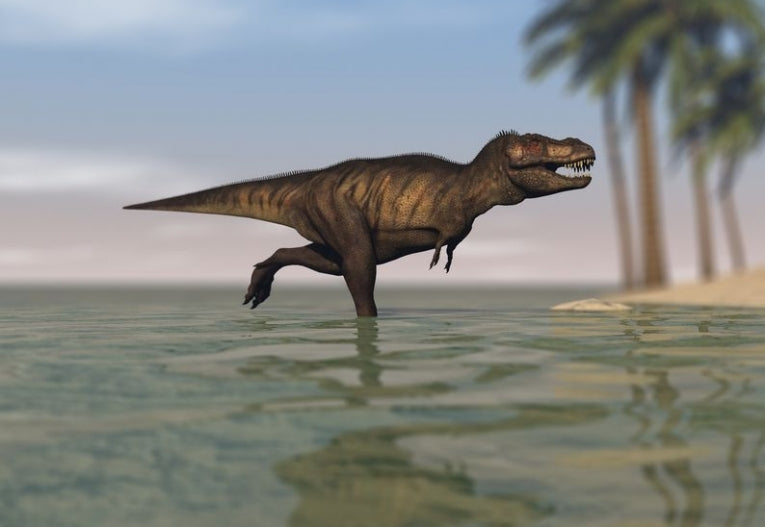While the two-legged dinosaurs were taller and better able to cross water than some four legged species, there is little evidence to assess how they dealt with hunting or migrating in water. Now, for the first time, some giant claw marks on the bottom of a Szechuan river bed have shed light on how they could manage to transfer their great mass across a body of water such as a river.
The
What is different is that Chinese research has discovered how water levels have varied throughout seasonal or perhaps less-frequent cycles. The research team that includes Scott Person published in the Chinese Science Bulletin on April 8th.
The giant claws concerned belonged to Sinocallopteryx, or another related predatory theropod such as the tyrannosaur we have illustrated above in all his watery glory. Throughout a stretch of 15m or almost 50 feet, the scratching of the big claws were made by a one metre-long pair of legs.
The coordination of the left and right scratches confirms the presence of one bipedal animal, while the species is likely to be one of the locally common theropods that we described. Scott sees the river area as a dinosaur super highway, 100 million years ago at the end of the Cretaceous. Sauropods, even bigger than their predators, were there in abundance and hunting was the name of the theropod's game!










